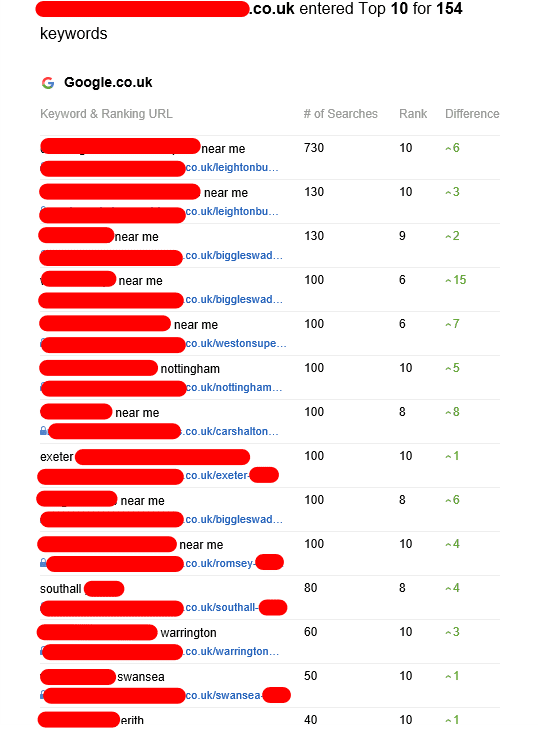Tier 3 Backlinks 101: The Ultimate Guide For Beginners

tier 1 backlinks - The Dangers of Black Hat Link Building
Tiered link building is a great method to improve your search engine rankings. However it is crucial to remember that it can also be dangerous using black-hat link building methods. Search engines like Google have been slashing at these practices for years, with their numerous updates.
Avoid black-hat methods such as PBNs and blogging comments. These techniques are harmful and can lead to penalties from Google.
First-tier links
This method of building links involves placing links on sites that have a high Domain Authority (DA) and a large amount of traffic every month. This is a great method to get your site noticed by search engine. However, it's not a perfect solution for every scenario. While it can temporarily increase your rankings, you must be focused on the quality and quantity of your backlinks.
The primary purpose of first-tier links is to build your backlink profile using several high-quality, natural looking links. This will allow you to rank for keywords that are relevant to your niche. It will also aid in gaining your website an improved reputation and is essential to getting the most visitors from search engine results.
Although some black hats advocate it, it's a risky tactic. It's not a good idea and isn't in line with Google's Webmaster guidelines If a human reviewer notices it, they might take a manual action that could dramatically lower your rank.
You should make your first-tier link look as natural as possible to avoid this risk. This means they must add value to the article in which they're embedded, and shouldn't appear obvious or sloppy. It is also an excellent idea to determine whether the directory to which you're posting your first-tier links is registered with Google. You can check this by entering the URL of the directory to the search engine like Google and then seeing how many results show up.
Second-tier links
Tiered link building is a great way to boost the power of your PBN however, it isn't without risk. Google is cracking down on links that appear to be fake, and the low-quality link that tiered linking relies on becomes less effective with time. This type of link building could result in penalties for your site and could reduce your rank.

It is important to avoid being penalized by using white-hat techniques when creating your second-tier link. For instance, you should use high-quality content on websites that are relevant to your niche. These links will carry more credibility than forums and comments, and will be more likely to be clicked by readers. It is also possible to submit articles to directories relevant to your topic. Sign up for HARO. This subscription service will send you daily email updates on the topics that reporters are interested in covering.
In addition to boosting the authority of your PBN Second-tier links can also enhance the quality of your primary backlinks. Second-tier links based on websites that have high domain authority increase the authority of primary backlinks. To maximize the benefits of this strategy it is recommended to utilize an assortment of standalone second-tier links as well as second-tier links that are used in conjunction with primary links.
Third-tier links
Tiered link building is a well-known strategy to boost the authority of websites. It can be used to boost rankings, increase the number of visitors, and increase revenues. This technique involves using backlinks in a chain that gradually increases in quality. It also helps to avoid spam filters.
However, the process of tier link building could be risky if it is not done in a proper manner. If you have numerous links that are not of high quality it could cause Google to penalize your site. This is because tiered linking isn't in line with Google's Webmaster Guidelines.
Tier 1 links are of the highest quality. They should be anchored to the keyword you're trying to target and should be relevant to the content on your website. This will help your website be found for the search term you're trying to rank for, which will result in increased visitors.
Tier 2 links are a bit less important. They're usually links to blogs, directories Q&A sites, and social media profiles. Tier 3 links are slightly more shady, but they can be useful. This includes links in forums, comment sections and bio profiles. Generally, people who engage in tiered link building tend to throw quality, relevancy and context out the window at this stage. They use automated tools to build third-tier links and link them to sites with low authority.
Fourth-tier links
Tiered link building can be an effective strategy to increase a website’s organic ranking. But it is only effective when used in conjunction with other white-hat SEO strategies. If not, it could lead to your website to be penalized by Google. Google penalizes websites that use tiered links since they are typically associated with poor quality content.
Tiered links are frequently linked to websites and blogs that are of poor quality. This means that they will lose their value when search engines start to see them as spammy and irrelevant. Additionally, these links can be found on low-quality social media profiles as well as web 2.0 platforms and other user-generated content sites. These backlinks are typically of poor quality and can be generated by automated tools.
Additionally, there are disadvantages, using tiered links can result in a backlink profile that is exaggerated and could affect a website's search engine optimization. It is hard to distinguish between high-quality as well as low-quality links. Moreover, it can be expensive for a company to maintain a lot of links. It is recommended to employ a tiered link-building approach together with a large content marketing campaign. This will ensure that your content is relevant to your audience and is more likely to bring visitors to your site.
